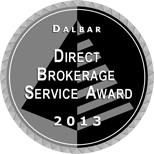 Just in time for Easter, SparxTrading.com is pleased to announce the roll-out of some very egg-citing features we’ve been working on. While we have been hinting about some improvements for some time, we’re glad to announce that they’re just about ready to be unveiled.
Just in time for Easter, SparxTrading.com is pleased to announce the roll-out of some very egg-citing features we’ve been working on. While we have been hinting about some improvements for some time, we’re glad to announce that they’re just about ready to be unveiled.
This year will have several big features launched, but one of the first big announcements has to do with a core feature of SparxTrading.com – our discount brokerage profiles. Specifically, we’re creating a new and improved user-centred platform for Canadian self-directed investors to learn about Canadian online brokerages.
Early beta access will be granted to industry members shortly with wider beta access available by the beginning of May.
This post explains why we decided to upgrade as well as what the upgrades will entail.
Starting at the Beginning
Our choice to start by looking at Canadian online brokerages and making the process of choosing a brokerage simpler, reflects the importance that we place on getting started on the right foot with self-directed investing.
Understanding how online brokerages work, what the processes and costs of trading are and staying on top of educational opportunities are things that we believe self-directed investors should be able to find out about easily, reliably and inexpensively. And, while choosing which brokerage to use seems like a simple enough task, it can actually end up impacting every trade a self-directed investor makes.
Our first version of online brokerage comparisons and profiles enabled visitors to access essential product and pricing details for the most popular kinds of trading that many Canadians engage in. As we have grown in popularity and learned what users were looking for, we saw the need to make things even easier and clearer for our visitors.
Building by Listening
Most of what we have implemented on SparxTrading.com has been informed by data and user feedback and what our data has been telling us is that there is an opportunity to offer a greater user experience.
For that reason, our improved brokerage profile pages are built around clearly connecting visitors with product knowledge, providing awareness of different promotions and/or current events as well as data from popular reviews all on one page. With our new online brokerage profiles, users can expect an improvement in the way in which they learn about, share their experiences with and connect to Canadian online brokerages.

A Platform to Learn
Constantly staying on top of the Canadian discount brokerage marketplace is hard work. The highly competitive landscape means information about pricing, products and promotions is always changing. In order to make better-informed decisions about choosing an online brokerage, however, it is critical to be able to access timely and accurate information on the choices that are out there.
Our new online brokerage reviews offer Canadian consumers convenient and comprehensive information about a discount brokerage that was previously scattered across many different websites. When combined with our online brokerage comparisons section, consumers have a full view of what is currently being offered by different brokerages and what price.
The redesigned profiles enable consumers to learn about online brokerage pricing and products (including platforms), current promotions (if they’re available for that brokerage), educational events as well as read the results of reviews done on brokerages all on one page. In addition, for those interested in learning more about a particular brokerage’s recent activities, the related articles link enables users to connect to stories on SparxTrading.com that mention or feature the discount brokerage.
A Platform to Share
When it comes to discount brokerages, every investor may have slightly different needs and therefore have different experiences with their brokerage. We understand that many self-directed investors would like a channel to share those experiences, whether they be positive or negative, with prospective clients as well as with online brokerages.
Fortunately, SparxTrading.com is widely read by both consumers as well as by online brokerages, so feedback is viewed by both groups. The new profiles will provide an opportunity for users to post and read comments made by other users or would-be users of a particular brokerage – again conveniently located on the broker profile.
A Platform to Connect
Whether it’s to find out more information about a brokerage or to get in touch with them directly, we provide easy to find contact points about a brokerage. New on the profiles this year, users will notice two important changes.
First, we are providing links to a brokerage’s social media presence – if they have one. While it is not a widespread practice, some brokerages do have a presence on social media (such as a Twitter feed or LinkedIn page) and for those that do, we’ve provided users with a quick way to connect to those channels.
A second important change for this year is that hyperlinks to brokerage sites will now be active only if/when a brokerage enables those links. To help facilitate the transition we will be leaving the links up during the beta test phase. After that point, however, only those brokerages that subscribe to this feature will have it enabled.
We’d Love Your Feedback
Since we built SparxTrading.com for self-directed investors, we always value feedback on what features users enjoy, which features they’d like to see added and which one’s they’re not so crazy about. During this beta testing phase we’ll be ironing out some of the bugs and so if you happen to notice a feature that isn’t working quite right, drop us a note with the details and we’ll look into it.
Turning an Exciting Corner
The exciting changes we’re rolling out this year mean that self-directed investors will be able to access information about Canadian discount brokerages in a way that they haven’t been easily able to do before. Of course the new online brokerage profiles are just the start of some exciting improvements we have planned.
In addition to the content improvements, we’ve been working harder to make our site much more mobile friendly and will be implementing some further design improvements to ensure visitors can do their discount brokerage research effectively on smartphones, tablets and desktops.
Stay tuned as we will be enabling beta access for a select group of users first and then widening access to all users. If you are with a discount brokerage and would like early access to the new profiles, please contact us directly. Note, only users replying from official organization emails will be allowed to participate for early release.

 In a world filled with TLDRs and endless opportunities to like, tweet, pin and share, finding the time or inclination to take on investing can be as much of a challenge as finding the money to do it with. And yet, as part of growing trend among Canadian online brokerages, would be and actual younger online investors (between the ages of 18 and 35) are increasingly being courted.
In a world filled with TLDRs and endless opportunities to like, tweet, pin and share, finding the time or inclination to take on investing can be as much of a challenge as finding the money to do it with. And yet, as part of growing trend among Canadian online brokerages, would be and actual younger online investors (between the ages of 18 and 35) are increasingly being courted.
 Just in time for Easter, SparxTrading.com is pleased to announce the roll-out of some very egg-citing features we’ve been working on. While we have been hinting about some improvements for some time, we’re glad to announce that they’re just about ready to be unveiled.
Just in time for Easter, SparxTrading.com is pleased to announce the roll-out of some very egg-citing features we’ve been working on. While we have been hinting about some improvements for some time, we’re glad to announce that they’re just about ready to be unveiled.

 For Canadian discount brokerages, 2014 has already been an eventful year. It has now been just over a month since
For Canadian discount brokerages, 2014 has already been an eventful year. It has now been just over a month since 
 Fortunately for self-directed investors, one Canadian research firm (Dalbar Canada) measures client experience for most of the Canadian discount brokerages as part of their direct brokerage service evaluation (DBSE) program. As part of the DBSE, Dalbar Canada also recognizes the high achievers in their evaluation with their Direct Brokerage Service Award.
Fortunately for self-directed investors, one Canadian research firm (Dalbar Canada) measures client experience for most of the Canadian discount brokerages as part of their direct brokerage service evaluation (DBSE) program. As part of the DBSE, Dalbar Canada also recognizes the high achievers in their evaluation with their Direct Brokerage Service Award. If you’ve ever watched a hockey game, you’ve probably seen team owners and managers high up in the stands stoically gazing down at the action. Even though they’re watching the same game as many of the cheering fans, the team managers and owners’ view of the action is far different than that of the crowds below them. In the minds of owners and managers, wins and losses translate into real business revenue gains and losses and ultimately portfolio value being created or getting destroyed for someone.
If you’ve ever watched a hockey game, you’ve probably seen team owners and managers high up in the stands stoically gazing down at the action. Even though they’re watching the same game as many of the cheering fans, the team managers and owners’ view of the action is far different than that of the crowds below them. In the minds of owners and managers, wins and losses translate into real business revenue gains and losses and ultimately portfolio value being created or getting destroyed for someone.

 In the spirit of sharing, we’ve put together a special series of tips for investors collected from throughout SparxTrading.com’s collection of great articles, interviews and reports. Be sure to check back here daily through December 25th for the latest tip or
In the spirit of sharing, we’ve put together a special series of tips for investors collected from throughout SparxTrading.com’s collection of great articles, interviews and reports. Be sure to check back here daily through December 25th for the latest tip or 


